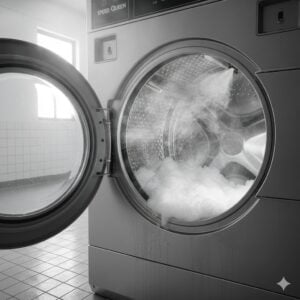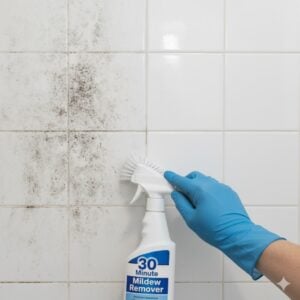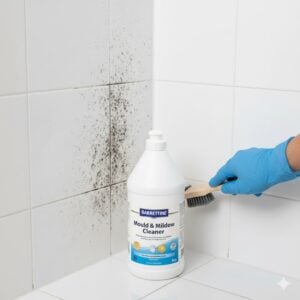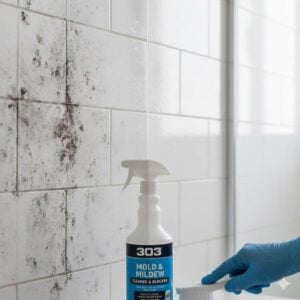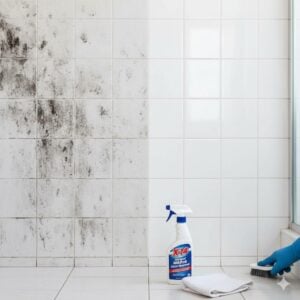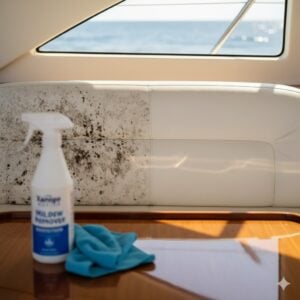Hello, dear readers! If you’re on a quest for a cleaner home, you’ve come to the right place. A cleaner for home isn’t just about aesthetics; it’s about creating a healthy, comfortable environment for you and your loved ones. Maintaining a clean home reduces allergens, prevents the spread of germs, and improves overall mental well-being. With our 11 essential tips, you’ll find practical and effective strategies to elevate your cleaning routine. Whether you’re tackling everyday messes or deep cleaning tasks, these insights will help you achieve a pristine living space. So, let’s dive into these handy tips that will make your home a haven of hygiene and comfort.
Table of Contents
Toggle#1: Organize Your Cleaning Supplies
A well-organized cleaning supply area is the foundation of an efficient cleaning routine. Start by gathering all your cleaning products and tools in one place. Use clear, labeled containers to categorize supplies by type, such as bathroom cleaners, kitchen cleaners, and general-purpose cleaners. Store frequently used items at eye level or in easy-to-reach spots to save time and effort.
Invest in a portable cleaning caddy to keep your most-used supplies within arm’s reach as you move from room to room. This can include items like all-purpose cleaner, sponges, microfiber cloths, and gloves. Having everything in one caddy reduces the need to go back and forth, streamlining the cleaning process.
For larger items like brooms, mops, and vacuum cleaners, designate a specific storage area. Use wall-mounted racks or hooks to keep these tools off the floor and easily accessible. Ensure that replacement parts, such as vacuum bags or mop heads, are stored nearby to avoid last-minute trips to the store.
Implementing a system for restocking supplies is crucial. Keep a checklist of essential items and regularly check inventory levels. When supplies run low, restock them promptly to prevent interruptions during cleaning sessions. Consider eco-friendly and refillable options to reduce waste and save money in the long run.
Maintaining a well-organized cleaning supply area not only saves time but also enhances the effectiveness of your cleaning efforts. By knowing exactly where each item is and having them easily accessible, you can tackle cleaning tasks more efficiently and with less frustration.
#2: Declutter Before You Clean
Decluttering is a vital step before starting any cleaning routine. Begin by assessing each room and identifying items that are out of place or no longer needed. Create three categories: keep, donate, and discard. This will help you systematically sort through belongings and make decisions easier.
Start with one area at a time, such as a drawer, shelf, or corner. Remove all items from the space and sort them into the appropriate categories. This process not only makes cleaning more manageable but also helps in creating a more organized and functional living space. Use storage solutions like bins, baskets, and shelves to keep items organized and easily accessible.
Once the clutter is cleared, surfaces like floors, countertops, and furniture become much easier to clean. Dust and dirt accumulate more in cluttered spaces, so removing unnecessary items can significantly reduce the time and effort needed for cleaning. This also minimizes hiding spots for pests and reduces allergens, contributing to a healthier home environment.
Consider setting up a regular decluttering schedule to prevent clutter from building up again. This could be a weekly or monthly task, depending on your household’s needs. Encourage all household members to participate, making it a collective effort to maintain a clutter-free home. Implementing a “one in, one out” rule can also help manage clutter. For every new item brought into the home, an old one should be removed.
By decluttering first, you create a clear and open space that allows for more efficient and thorough cleaning. It enhances the overall appearance of your home and provides a sense of order and tranquility. Additionally, it makes future cleaning sessions quicker and less daunting.
#3: Use Natural Cleaners
Switching to natural cleaners offers multiple benefits for both your home and the environment. Unlike chemical-based products, natural cleaners are free from harsh toxins and are safer for your family and pets. They are also more sustainable and often cost-effective, as many can be made from ingredients you already have at home.
One popular natural cleaner is a simple mixture of vinegar and water. Vinegar is acidic, making it effective at cutting through grease and grime. Mix equal parts of white vinegar and water in a spray bottle for a versatile cleaner that works on countertops, windows, and bathrooms. For added scent, you can infuse the vinegar with citrus peels for a few days before using.
Baking soda is another excellent natural cleaner. It’s a mild abrasive that can tackle tough stains and odors. Sprinkle baking soda on surfaces like sinks, bathtubs, and stovetops, then scrub with a damp sponge. For a powerful combination, mix baking soda with vinegar to create a fizzy reaction that helps lift dirt and grime.
Lemon juice is also highly effective, thanks to its natural antibacterial properties. Use it to clean cutting boards, remove stains, and freshen up garbage disposals. Simply cut a lemon in half, dip it in salt for added abrasiveness, and scrub the desired area.
Essential oils can be added to homemade cleaners for their pleasant scents and antibacterial benefits. Tea tree oil, lavender, and eucalyptus are popular choices. Add a few drops to your vinegar or baking soda mixtures for enhanced cleaning power and a fresh aroma.
Using natural cleaners reduces your exposure to harmful chemicals, promotes a healthier indoor environment, and minimizes your ecological footprint. They are easy to make, highly effective, and offer peace of mind knowing that your home is clean and safe.
#4: Focus on High-Touch Areas
High-touch areas in your home are hotspots for germs and dirt, making them critical targets in your cleaning routine. These areas include door handles, light switches, remote controls, faucets, and appliance handles. Because they are frequently touched by multiple people throughout the day, they can harbor bacteria and viruses, contributing to the spread of illness.
To effectively clean these areas, use a disinfectant spray or wipes specifically designed to kill germs. Make sure to follow the product instructions for the appropriate contact time, which is the amount of time the surface should remain wet to ensure effectiveness. For natural alternatives, a mixture of rubbing alcohol and water or hydrogen peroxide can be used as effective disinfectants.
Create a checklist of high-touch areas in each room to ensure none are overlooked. In the kitchen, pay extra attention to cabinet handles, refrigerator doors, and microwave buttons. In the bathroom, focus on the toilet handle, shower knobs, and sink faucets. Don’t forget about less obvious items like phone screens, computer keyboards, and game controllers.
Implementing a daily or every-other-day cleaning schedule for these areas can significantly reduce the presence of germs. Encourage household members to practice good hygiene, such as washing hands regularly and using hand sanitizer, to minimize the transfer of bacteria and viruses to these surfaces.
By prioritizing high-touch areas, you not only maintain a cleaner home but also help protect your family from potential illnesses. Regularly disinfecting these spots keeps them free from harmful pathogens, contributing to a healthier living environment.
#5: Establish a Cleaning Schedule
Consistency is key when it comes to maintaining a clean home, and establishing a cleaning schedule can help achieve this. Start by breaking down tasks into daily, weekly, and monthly categories. This approach ensures that all areas of your home receive regular attention without overwhelming you.
Daily tasks should include activities that keep your home tidy and manageable, such as making the bed, washing dishes, wiping down countertops, and tidying up common areas. These small tasks, when done consistently, prevent clutter and mess from building up.
Weekly tasks involve more thorough cleaning efforts. Assign specific days for different chores to distribute the workload evenly. For example, you might vacuum and mop floors on Mondays, clean bathrooms on Wednesdays, and do laundry on Fridays. This way, you stay on top of deeper cleaning tasks without spending an entire day on housework.
Monthly tasks cover less frequent but important cleaning duties. These might include washing windows, cleaning out the refrigerator, dusting ceiling fans, and checking and replacing air filters. Scheduling these tasks ensures they are not forgotten and are done regularly.
Use a calendar or a digital app to keep track of your cleaning schedule. Set reminders to stay on top of tasks and make adjustments as needed. Involve all household members in the schedule by assigning specific chores to each person, promoting a shared responsibility for maintaining a clean home.
By establishing a cleaning schedule, you create a routine that makes cleaning more manageable and less time-consuming. It ensures that no area of your home is neglected and helps maintain a consistently clean and organized environment.
#6: Don’t Forget the Air
Maintaining good air quality is an often overlooked but crucial aspect of keeping your home clean and healthy. Poor indoor air quality can lead to respiratory issues, allergies, and an overall uncomfortable living environment. To improve air quality, start by ensuring proper ventilation. Open windows and doors regularly to allow fresh air to circulate and to reduce the buildup of indoor pollutants.
Investing in air purifiers can significantly enhance the quality of air in your home. Air purifiers with HEPA filters are particularly effective at removing airborne particles such as dust, pollen, and pet dander. Place air purifiers in high-traffic areas and bedrooms for maximum benefit.
Houseplants are another natural way to improve air quality. Certain plants, like spider plants, peace lilies, and snake plants, are known for their ability to filter out common toxins and release oxygen. Adding these plants to your home can create a healthier and more aesthetically pleasing environment.
Regularly changing HVAC filters is essential for maintaining clean air. Dirty filters can circulate dust and allergens throughout your home, exacerbating respiratory issues. Set a reminder to check and replace filters every 1-3 months, depending on usage and the presence of pets or allergens.
Humidity levels also play a crucial role in air quality. Too much humidity can lead to mold growth, while too little can cause dryness and irritation. Use a hygrometer to monitor indoor humidity and aim to keep it between 30-50%. Dehumidifiers and humidifiers can help maintain optimal humidity levels.
Lastly, avoid using harsh chemical cleaners that can release volatile organic compounds (VOCs) into the air. Opt for natural or low-VOC cleaning products to minimize indoor air pollution. Ensuring good air quality through these steps not only keeps your home cleaner but also promotes better health and well-being for you and your family.
#7: Clean Your Cleaning Tools
Cleaning tools themselves can become breeding grounds for germs and dirt if not maintained properly. Ensuring that your cleaning tools are clean is essential for effective cleaning and to prevent cross-contamination.
Start with your vacuum cleaner. Regularly empty the vacuum bag or dust container to maintain its suction power and prevent dust from being blown back into your home. Clean or replace filters according to the manufacturer’s instructions to keep the vacuum running efficiently. Use a damp cloth to wipe down the exterior and the brush roll to remove any tangled hair or debris.
For mops, it’s crucial to wash the mop head after each use. If it’s machine-washable, toss it in the washing machine with hot water and detergent. If not, soak it in a mixture of hot water and a disinfectant solution. Allow it to air dry completely before storing it to prevent mold growth. Consider replacing mop heads regularly to ensure maximum cleanliness.
Sponges and cleaning cloths can harbor bacteria if not cleaned properly. Rinse sponges thoroughly after each use and sanitize them by microwaving them damp for one to two minutes or running them through the dishwasher. Replace sponges frequently, ideally every one to two weeks. Wash microfiber cloths separately in hot water without fabric softener, which can reduce their effectiveness.
Cleaning brushes, such as toilet brushes and scrub brushes, should also be disinfected regularly. Soak them in a bleach solution or a mixture of hot water and vinegar. Let them air dry completely before storing them. Replace toilet brushes every six months to a year, depending on usage.
By keeping your cleaning tools clean, you ensure that they perform their tasks effectively and do not contribute to the spread of dirt and germs in your home. Regular maintenance of these tools will extend their lifespan and enhance the overall cleanliness of your living environment.
#8: Deep Clean Periodically
Deep cleaning is an essential part of maintaining a truly clean home, as it tackles areas and tasks that are often overlooked during regular cleaning routines. Periodic deep cleaning not only improves the appearance of your home but also contributes to a healthier living environment.
Start by identifying areas that require deep cleaning. These typically include behind and under furniture, inside appliances like ovens and refrigerators, and within less accessible spaces such as ceiling corners and behind radiators. Set aside specific days for deep cleaning different parts of your home to make the process more manageable.
For carpets and upholstery, deep cleaning involves more than just regular vacuuming. Consider renting or investing in a steam cleaner to remove embedded dirt, allergens, and bacteria. Steam cleaning can refresh and sanitize these surfaces, extending their lifespan and enhancing indoor air quality.
Kitchens benefit significantly from periodic deep cleaning. This includes scrubbing greasy areas like the stovetop, oven, and range hood, as well as cleaning out the refrigerator and freezer. Pull out appliances to clean the walls and floors behind them, where dust and grime often accumulate unnoticed.
Bathrooms also require thorough deep cleaning. Focus on removing soap scum and mildew from tiles and grout using specialized cleaners or a mixture of baking soda and vinegar. Disinfect all surfaces, including toilet bases, showerheads, and sink drains, to eliminate hidden bacteria and mold.
Don’t forget smaller details such as washing curtains, cleaning light fixtures, and dusting baseboards. These tasks, though less frequent, are crucial for maintaining a fresh and inviting home environment.
Illustration of a deep cleaning checklist can be helpful here. Caption: “Deep Cleaning Checklist: Areas and Tasks to Prioritize.”
Regularly scheduling deep cleaning sessions ensures that all areas of your home are addressed, preventing the buildup of dirt and grime. This not only keeps your home looking its best but also promotes a healthier living space for you and your family.
#9: Pay Attention to Details
When cleaning your home, it’s easy to overlook the small details that can make a significant difference in overall cleanliness. Focusing on these often-neglected areas ensures a more thorough and satisfying cleaning result.
One common area that requires detailed attention is light switches and electrical outlets. These are frequently touched but rarely cleaned, making them a hotspot for germs. Use a disinfectant wipe or a cloth dampened with a mild cleaning solution to wipe down these surfaces regularly.
Baseboards and molding can accumulate dust and grime over time. Use a microfiber cloth or a vacuum with a brush attachment to remove dust, followed by wiping them down with a damp cloth. For stubborn dirt, a mixture of water and mild detergent works well.
Window tracks and blinds are another detail often missed. Clean window tracks by vacuuming up loose debris and then wiping them with a cloth soaked in a solution of water and vinegar. For blinds, dust them with a microfiber cloth or a special blind-cleaning tool, and for deeper cleaning, wipe them with a damp cloth.
Behind and underneath furniture also deserve attention. Move furniture periodically to vacuum or sweep these hidden areas. This not only helps in removing dust and allergens but also prevents pests from settling in.
Ceiling fans and light fixtures should be included in your detailed cleaning routine. Use an extendable duster or a damp cloth to clean the blades and fixtures, ensuring you remove dust and cobwebs that can affect air quality and the appearance of your home.
Kitchen cabinet handles and drawer pulls are high-touch areas that accumulate grime. Wipe these down regularly with a disinfectant solution to keep them clean and hygienic.
Illustration of a cleaning detail list can be helpful here. Caption: “Cleaning Detail Checklist: High-Touch and Overlooked Areas to Address.”
By paying attention to these details, you ensure that every part of your home is clean and well-maintained. This meticulous approach not only enhances the overall look of your home but also promotes a healthier living environment by eliminating hidden dirt and germs.
#10: Educate Your Household
Maintaining a clean home is a team effort, and educating everyone in your household about their role in this process is crucial. Start by setting clear expectations for cleanliness and hygiene standards. Explain why these standards are important for health, comfort, and overall well-being.
Create a list of daily chores and assign them to each household member based on their age and capabilities. For example, children can be responsible for making their beds, putting away toys, and helping to set the table, while adults can handle tasks like cleaning bathrooms, vacuuming, and taking out the trash. Use a chore chart to track progress and ensure accountability.
Demonstrate proper cleaning techniques to ensure everyone knows how to perform their tasks efficiently and effectively. Show them how to properly use cleaning supplies, disinfect high-touch areas, and organize their belongings to prevent clutter. Reinforce the importance of washing hands regularly and keeping personal items tidy.
Encourage a routine where each person spends a few minutes each day on quick cleaning tasks, such as wiping down surfaces, picking up after themselves, and putting things back in their designated places. This habit helps prevent messes from accumulating and makes weekly or monthly deep cleans less daunting.
Reward and recognize efforts to maintain cleanliness. Positive reinforcement can motivate everyone to keep up their good habits. This can be as simple as verbal praise or small incentives like choosing a family activity or treat.
Illustration of a chore chart can be helpful here. Caption: “Household Chore Chart: Assigning Responsibilities for a Cleaner Home.”
By educating and involving everyone in the household, you foster a sense of shared responsibility and teamwork. This not only helps keep the home clean but also teaches valuable life skills and promotes a cooperative and respectful living environment.
#11: When to Call the Professionals
Knowing when to call in professional cleaning services is crucial for maintaining a spotless and healthy home, especially for tasks that are too demanding or specialized. Professional cleaners have the expertise, equipment, and products to handle tough jobs that go beyond regular cleaning routines.
One key situation where professional help is beneficial is after major renovations or construction work. The dust and debris left behind can be challenging to clean thoroughly without the right tools. Professional cleaners ensure that every nook and cranny is dust-free and safe to occupy.
Stubborn stains and odors, particularly in carpets and upholstery, often require professional-grade cleaning solutions and equipment. If you have pets, their fur, dander, and occasional accidents can create persistent problems that professionals can address more effectively with deep cleaning techniques.
Another scenario for calling professionals is mold remediation. Mold can pose serious health risks and requires specialized treatment to ensure complete removal and prevent recurrence. Professional mold remediation services can identify the source, remove the mold safely, and provide advice on preventing future growth.
Seasonal deep cleaning is also an excellent time to consider professional services. Spring and fall are ideal for comprehensive cleaning, including windows, drapes, and hard-to-reach areas. Professionals can handle these tasks efficiently, giving your home a thorough refresh.
Additionally, if you have a busy schedule or physical limitations, regular professional cleaning services can maintain your home’s cleanliness and hygiene. This support ensures that even with a hectic lifestyle, your living environment remains clean and comfortable.
Illustration of a list of scenarios for professional cleaning can be helpful here. Caption: “When to Call Professional Cleaners: Scenarios for Optimal Home Maintenance.”
Calling in professionals not only saves time and effort but also ensures that cleaning tasks are performed to the highest standards. This helps maintain a healthier and more pleasant living environment, giving you peace of mind and more time to enjoy your home.
Why Choose Bio On for Your Cleaner for Home
Bio On offers specialized cleaning services that ensure a thorough and efficient cleaning process. With expertise in mold remediation, fire damage cleanup, odor removal, and deep cleaning, Bio On addresses even the most challenging cleaning scenarios. Utilizing professional-grade equipment and eco-friendly products, Bio On guarantees a safer and healthier home environment. Each service is tailored to meet specific needs, ensuring the highest standards of cleanliness and hygiene. With a team of skilled professionals, Bio On provides reliable and effective solutions, saving time and delivering exceptional results. Trust Bio On to maintain a pristine home, free from contaminants and allergens, for a comfortable and pleasant living space.
Conclusion
A cleaner home improves health, comfort, and overall well-being. Implementing these tips ensures a thorough and efficient cleaning routine, from organizing supplies to deep cleaning and educating the household. For tasks that require professional expertise, contact Bio On for reliable and effective cleaning solutions. Click the WhatsApp button for a free consultation with the Bio On team and discover how professional services can enhance your home’s cleanliness and hygiene.








